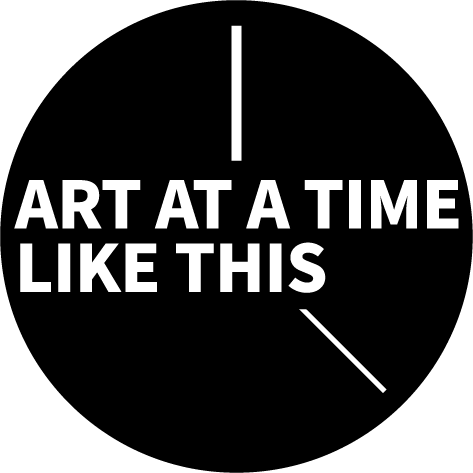
Miwako Tezuka
Guest Curator
Born in 1988 in Tokyo, Gaetan Kubo is known for his research-based mixed media kinetic installations that explore the invisible and the indivisible. This March, his much anticipated solo exhibition at a prestigious museum in Kyoto was fully installed and waiting for the audience. But, due to the spread of Covid-19, it never saw the light of the day. What responses and reactions could that show have received from people? We may only imagine. Like a student of natural history, but also that of supernatural history, in his work, Kubo dives into imaginative exploration of the world that inevitably leads him to the zone of uncertainty where the border between plants and animals, facts and fictions, histories and mythologies, and the self and the other, is not so easily traced. Many trains of thought intermingle in his work weaving out speculative reality. In that reality, it seems possible for all existing things—whether sentient or not—to have kinship. Immersing myself in Kubo’s hypnotically poetic space in my own imagination, I am reminded that, if we can face our fear of unknown with curiosity rather than denial and rejection, we may find hope in our utterly divided world.
Miwako Tezuka,
PhD Associate Director
Reversible Destiny Foundation, NYC
Gaetan Kubo
Today, my exhibition died. Or maybe yesterday, I don't know.
On March 30th, my exhibition was announced to be cancelled. Then the next day, the cancellation was officially released.
Not even one visitor could watch my work even if it was installed in the museum.
On the preview before that day, a boy around 10 year old was watching my video work.
In front of that work, there was another one made with playground equipment which is more for children but the boy was watching that strange work continuously.
The video starts talking about "Barometz", a zoophyte like animal but also a plant. That thing cannot be classified between an animal and a plant but it may also be seen as a virus. Humans have always fought with this "unidentified invisible Thing", and this cycle will continue forever. What we need to solve the problem is Imagination.
During the Heian period, an earthquake occurred after the Halley's Comet. Mappo-shiso (the "end of the world" belief) was prevalent. People made an art-like statue of god to be saved.
If imagination is what can overcome the "unidentified invisible Thing", what we need is a child imagination and art can bring out that power.
The video work was made in one day during the installation because the exhibition was on the verge of a shut down.
I could only show it to one child, but the hope that could be seen in his eyes saved me.
今日 展覧会が死んだ もしかすると昨日かもしれない。
3月30日、展覧会の開催中止を内部告知され、次の日にそれは公表された。美術館にインストールが済んでいた作品は誰の目に触れることなく解体された。
中止前に行われた関係者内覧会で、10歳くらいの少年が私の映像作品をじっと見ていた。今回公園遊具を使った子ども向けの作品の横に、どちらかというと大人向けな奇怪な解説映像をつけていたのだが、彼はそれを何回も繰り返し見ていた。
映像は今回のモチーフである、綿の伝来の誤解が生み出した、動物でもあり植物でもある越境怪物「バロメッツ」に関することから、動物とも植物とも捉えられない菌類の存在について、私たちが「見えない何か」と向き合わなければいけないのは今までもこれからも続くこと、そして人間はその「見えない何か」と向き合わなければいけなく、それをとらえられるのは「想像力」であると希望を込めた映像であった。
平安時代、ハレー彗星の直後に地震がおき、末法思想が蔓延した時、人々は神像といった芸術を生み出すことで救われた。見えない何かに打ち勝つものが想像力であるとすれば、子どもの未来の想像力のヴィジョンになることこそが、今美術に必要な力なのではないであろうか?
子どもたちが今回の展覧会を見られなくなったことから、急遽1日で付随した映像なのだが、彼が映像からどのようなヴィジョンを持ったのか、そこにこそ希望があると大人である私が救われた気がした。
Hope!, 2020
Animal Tree, 2020
Credit: KYOTO STEAM-世界文化交流祭-2020 制作作品, KUBO Gaëtan x KOTOBUKI CORPORATION / TOWN ART CO., Ltd.
Re52hz, 2017
Gaetan Kubo
All images courtesy the artist and gallery



